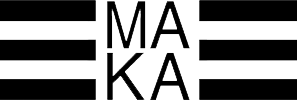Here’s How Your Brand Can Use Pinterest for Business in 2019
Your brand is on Facebook, Instagram, Twitter and LinkedIn. Your social and creative teams are already run ragged trying to create quality content for these platforms, not to mention for your own website and retailers. Should you really commit to another social media platform?
The answer to this question is almost certainly yes. To be sure, though, we have a question for you. Who’s your core demographic?
If you answered with millennials, then we can confirm that you should, absolutely, be posting on Pinterest, as it reaches 42 million millennials, not to mention 46 million women ages 25 to 54. “But wait!” you say. “What if my core demographic is men?” It’s still a good idea to post on Pinterest, given that there was a 50% increase in men on the platform in 2018, according to Pinterest itself.
So let’s assume that you’re reasonably convinced and ready to dive into this platform. Where do you start?
If you haven’t already, make sure your profile is fleshed out with information about your store or brand. Then, create boards highlighting topics your core consumer is likely to be interested in, such as meal prepping or fall fashion. Fill these with both your own pins and other related pins, so that you’re providing value to your viewers. Most people come to Pinterest to get ideas or use it as a search engine, so keep that in mind when creating and gathering content.
If you’re wondering what your own pins should look like, some best creative practices include featuring a person using the product, helping viewers picture the product in their own lives (i.e. showing it in context), or aligning with specific events such as Halloween. It’s usually best to include your logo in the pin and the brand name in the first few words of the description. Pinterest has some great tutorial videos that go more into depth on this topic.
If you want a dose of creative inspiration, Pinterest has a great studio gallery of example pins.
Next, use hashtags in your pin descriptions to help people better find your pins—as with most instances of hashtags, though, less is more. Keep it to just a few.
Applying for rich pins is another step you can take to give your pin more real estate by attaching recipe or product details to your pin.
With quality content your audience should grow, and with this, constantly test your pins—colors, fonts, content type, etc—to see what drives the best engagement.
At this point, if you have a few dollars to put into Pinterest marketing, and you’ve learned what delivers the best results, it would be smart to begin promoting your Pins. Budgets on promoted pins are customizable, and will allow your pins to reach a higher volume of people in the places they’re most likely to click, such as within interest and keyword targeting that matches your niche.
Bonus: Do you advertise on Amazon or Google Ads? You can use keyword insights from both to influence the keywords you target with your promoted Pinterest pins.
In sum:
Provide value to your audience through relevant boards
Test, test, and again test your own pin content
If budget allows, promoted pins will increase audience reach
Hey, that’s a lot easier than you thought, isn’t it? *Sigh of relief*
If you still have questions, want to know more about promoting your pins, or are feeling overwhelmed by your entire paid social strategy, book a free consultation with us at hello@makadigital.com. We’re happy to chat through questions big and small.
*This blog post was originally posted on Quora by MAKA Digital team members.


